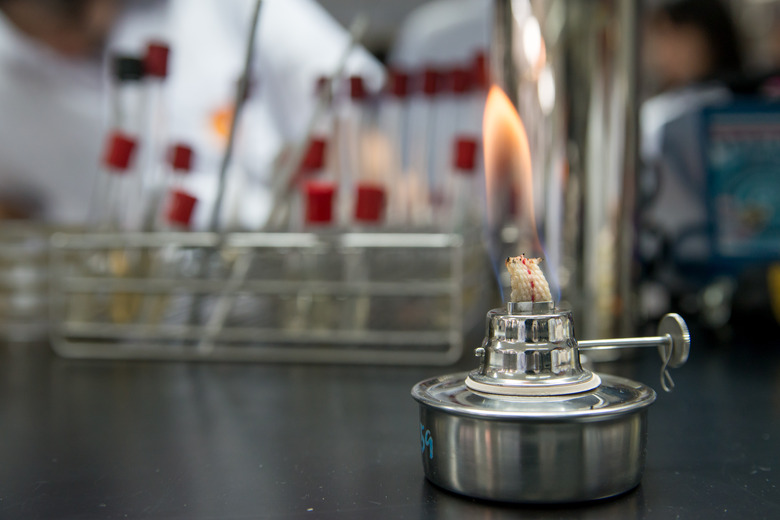Types Of Heating Devices To Use In Science Experiments
Temperature is one of the most important physical variables that is used to control physical, biological and chemical experiments. A common requirement in a laboratory experiment is the need to heat a sample. Several pieces of equipment can do this, including the Bunsen burner, laboratory oven, hot plate and incubator.
Bunsen Burner
Bunsen Burner
The Bunsen burner is one of the most well-known pieces of laboratory equipment found within school science labs. It consists of a mixing tube which is used to generate a mixture of gas and air. Once lit, the intensity of the flame can be varied by opening or closing an adjustable air hole. Bunsen burners are typically used to heat beakers of liquid in order to induce chemical reactions. Bunsen burners also pose disadvantages: They cannot control the temperature as accurately as electronic heaters and using an open flame can be dangerous.
Laboratory Oven
Laboratory Oven
You use a laboratory oven to heat samples (usually solids) to a set temperature, for a given amount of time, within an enclosed environment. The devices are used across the scientific disciplines for annealing, drying and sterilization. Unlike standard cooking ovens, laboratory ovens offer accuracy and uniformity of set temperatures. Laboratory ovens are designed to ensure that every point within the device is at the target temperature.
Hot Plate
Hot Plate
Hot plates are simple electrical appliances used to heat samples within the air. They consist of a heating top and a number of controls to change the temperature. Hot plates are generally used when the desired temperature is above 100 degrees Celsius (212 degrees Fahrenheit) and are regarded to be much safer than open-flame heaters such as Bunsen burners.
Laboratory Incubator
Laboratory Incubator
You use a laboratory incubator to heat a biological sample to a set temperature, which has usually been set to optimize the growth of the biological sample. Two main types of incubators include gas and microbiological incubators. The gas incubator is a sealed oven-like device that pumps a set concentration of carbon dioxide into the incubation space. This allows the control of humidity and pH as well as temperature. A microbiological incubator does not inject gas into the incubation space and is essentially a laboratory oven that works between 5 to 70 degrees Celsius (41 to 158 degrees Fahrenheit). This makes them useful for the growth and storage of bacterial cultures that do not require specific humidity and pH conditions.
Cite This Article
MLA
Markings, Samuel. "Types Of Heating Devices To Use In Science Experiments" sciencing.com, https://www.sciencing.com/types-heating-devices-use-science-experiments-12461/. 27 April 2018.
APA
Markings, Samuel. (2018, April 27). Types Of Heating Devices To Use In Science Experiments. sciencing.com. Retrieved from https://www.sciencing.com/types-heating-devices-use-science-experiments-12461/
Chicago
Markings, Samuel. Types Of Heating Devices To Use In Science Experiments last modified August 30, 2022. https://www.sciencing.com/types-heating-devices-use-science-experiments-12461/
